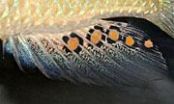(Press-News.org) Scientists at the University of Southampton have identified key characteristics that enhance a nanoparticle's ability to penetrate skin, in a milestone study which could have major implications for the delivery of drugs.
Nanoparticles are up to 100,000 times smaller than the thickness of a human hair and drugs delivered using them as a platform, can be more concentrated, targeted and efficient than those delivered through traditional means.
Although previous studies have shown that nanoparticles interact with the skin, conditions in these experiments have not been sufficiently controlled to establish design rules that enhance penetration.
Now a multidisciplinary team from the University has explored changes in the surface charge, shape and functionality (controlled through surrounding molecules) of gold nanoparticles to see how these factors affect skin penetration.
"By creating nanoparticles with different physicochemical characteristics and testing them on skin, we have shown that positively charged nanorod shaped, nanoparticles are two to six times more effective at penetrating skin than others," says lead author Dr Antonios Kanaras. "When the nanoparticles are coated with cell penetrating peptides, the penetration is further enhanced by up to ten times, with many particles making their way into the deeper layers of the skin (such as the dermis)."
Establishing which characteristics contribute to penetration is also important in discovering ways to prevent potentially toxic nanoparticles in other materials, such as cosmetics, from entering the skin.
The research, which has been published in the journal Small, drew on the medical expertise of Dr Neil Smyth and Dr Michael Ardern-Jones, as well as contributions from physicist Professor Otto Muskens. PhD student Rute Fernandes conducted the experimental work.
"Our interest is now focused on incorporating these findings into the design of new nanotechnological drugs for transdermal therapy," says Dr Kanaras. "We welcome the opportunity to work with external partners in industry and government in order to achieve this."
INFORMATION:
Notes to editors
1. For access to the full research paper Interactions of Skin with Gold Nanoparticles of Different Surface Charge, Shape and Functionality (smll.201401913) please contact a member of the media relations team.
2. For interview opportunities with Dr Antonios Kanaras please contact a member of the media relations team.
3. Through world-leading research and enterprise activities, the University of Southampton connects with businesses to create real-world solutions to global issues. Through its educational offering, it works with partners around the world to offer relevant, flexible education, which trains students for jobs not even thought of. This connectivity is what sets Southampton apart from the rest; we make connections and change the world. http://www.southampton.ac.uk/
http://www.southampton.ac.uk/weareconnected
#weareconnected
For further information contact:
Steven Williams, Media Relations, University of Southampton, Tel: 023 8059 2128, email: S.Williams@soton.ac.uk
http://www.soton.ac.uk/mediacentre/
Follow us on twitter: http://twitter.com/unisouthampton
Like us on Facebook: http://www.facebook.com/unisouthampton
Nanoparticle research could enhance drug delivery through skin
2014-10-09
ELSE PRESS RELEASES FROM THIS DATE:
Greek Bronze Age ended 100 years earlier than thought, new evidence suggests
2014-10-09
Conventional estimates for the collapse of the Aegean civilization may be incorrect by up to a century, according to new radiocarbon analyses.
While historical chronologies traditionally place the end of the Greek Bronze Age at around 1025 BCE, this latest research suggests a date 70 to 100 years earlier.
Archaeologists from the University of Birmingham selected 60 samples of animal bones, plant remains and building timbers, excavated at Assiros in northern Greece, to be radiocarbon dated and correlated with 95.4% accuracy using Bayesian statistical methodology at the ...
Coastal living boosts physical activity
2014-10-09
VIDEO:
Learn more about our research into the coast and how it can boost health and wellbeing.
Click here for more information.
People who live close to the coast are more likely to meet physical activity guidelines than inland dwellers, finds a new study released today.
The research involved participants from across England and describes a particularly noticeable effect on western – but unexpectedly not eastern – coasts of the nation.
Publishing their findings ...
Mining big data yields Alzheimer's discovery
2014-10-09
Scientists at The University of Manchester have used a new way of working to identify a new gene linked to neurodegenerative diseases such as Alzheimer's. The discovery fills in another piece of the jigsaw when it comes to identifying people most at risk of developing the condition.
Researcher David Ashbrook and colleagues from the UK and USA used two of the world's largest collections of scientific data to compare the genes in mice and humans. Using brain scans from the ENIGMA Consortium and genetic information from The Mouse Brain Library, he was able to identify a ...
Dark matter half what we thought, say scientists
2014-10-09
A new measurement of dark matter in the Milky Way has revealed there is half as much of the mysterious substance as previously thought.
Australian astronomers used a method developed almost 100 years ago to discover that the weight of dark matter in our own galaxy is 800 000 000 000 (or 8 x 1011) times the mass of the Sun.
They probed the edge of the Milky Way, looking closely, for the first time, at the fringes of the galaxy about 5 million billion kilometres from Earth.
Astrophysicist Dr Prajwal Kafle, from The University of Western Australia node of the International ...
UPMC investigation into GI scope-related infections changes national guidelines
2014-10-09
PITTSBURGH, Oct. 9, 2014 – National guidelines for the cleaning of certain gastrointestinal (GI) scopes are likely to be updated due to findings from UPMC's infection prevention team.
The research and updated disinfection technique will be shared Saturday in Philadelphia at ID Week 2014, an annual meeting of health professionals in infectious disease fields.
"Patient safety is our top priority," said senior author Carlene Muto, M.D., M.S., director of infection prevention at UPMC Presbyterian Hospital. "We are confident that the change from disinfection to sterilization ...
UPMC programs to improve hand hygiene reduced infections, increased compliance
2014-10-09
PITTSBURGH, Oct. 9, 2014 – UPMC Presbyterian Hospital's infection prevention teams have improved hand washing and sanitizing compliance at the hospital to nearly 100 percent among clinical staff through accountability and educational measures. In a separate effort at UPMC Mercy Hospital, rates of a deadly infection were reduced by educating patients about hand hygiene.
The successful techniques will be reported Saturday in presentations in Philadelphia at ID Week 2014, an annual meeting of health professionals in infectious disease fields.
"Hand hygiene compliance ...
Discovery may lead to lower doses of chemotherapy
2014-10-09
No matter what type of chemotherapy you attack a tumor with, many cancer cells resort to the same survival tactic: They start eating themselves.
Scientists at Brigham Young University discovered the two proteins that pair up and switch on this process – known as autophagy.
"This gives us a therapeutic avenue to target autophagy in tumors," said Josh Andersen, a BYU chemistry professor. "The idea would be to make tumors more chemo-sensitive. You could target these proteins and the mechanism of this switch to block autophagy, which would allow for lower doses of ...
The cichlids' egg-spots: How evolution creates new characteristics
2014-10-09
The evolution of new traits with novel functions has always posed a challenge to evolutionary biology. Studying the color markings of cichlid fish, Swiss scientists were now able to show what triggered these evolutionary innovations, namely: a mobile genetic element in the regulatory region of a color gene. Their results have been published in the latest issue of the renowned scientific journal Nature Communications.
Biological evolution is in general based on the progressive adaption of traits through natural or sexual selection. However, ever so often, complex traits ...
Understanding the bushmeat market: Why do people risk infection from bat meat?
2014-10-09
Ebola, as with many emerging infections, is likely to have arisen due to man's interaction with wild animals – most likely the practice of hunting and eating wild meat known as 'bushmeat'. A team of researchers led by the University of Cambridge and the Zoological Society of London (ZSL) has surveyed almost six hundred people across southern Ghana to find out what drives consumption of bat bushmeat – and how people perceive the risks associated with the practice.
The Straw-Coloured Fruit Bat, Eidolon helvum, is widely hunted and eaten in Ghana, but carries ...
A cost-effective and energy-efficient approach to carbon capture
2014-10-09
Carbon capture is a process by which waste carbon dioxide (CO2) released by factories and power plants is collected and stored away, in order to reduce global carbon emissions. There are two major ways of carbon capture today, one using powder-like solid materials which "stick" to CO2, and one using liquids that absorb it. Despite their potential environmental and energy benefits, current carbon capture strategies are prohibitive because of engineering demands, cost and overall energy-efficiency. Collaborating scientists from EPFL, UC Berkley and Beijing have combined carbon-capturing ...


